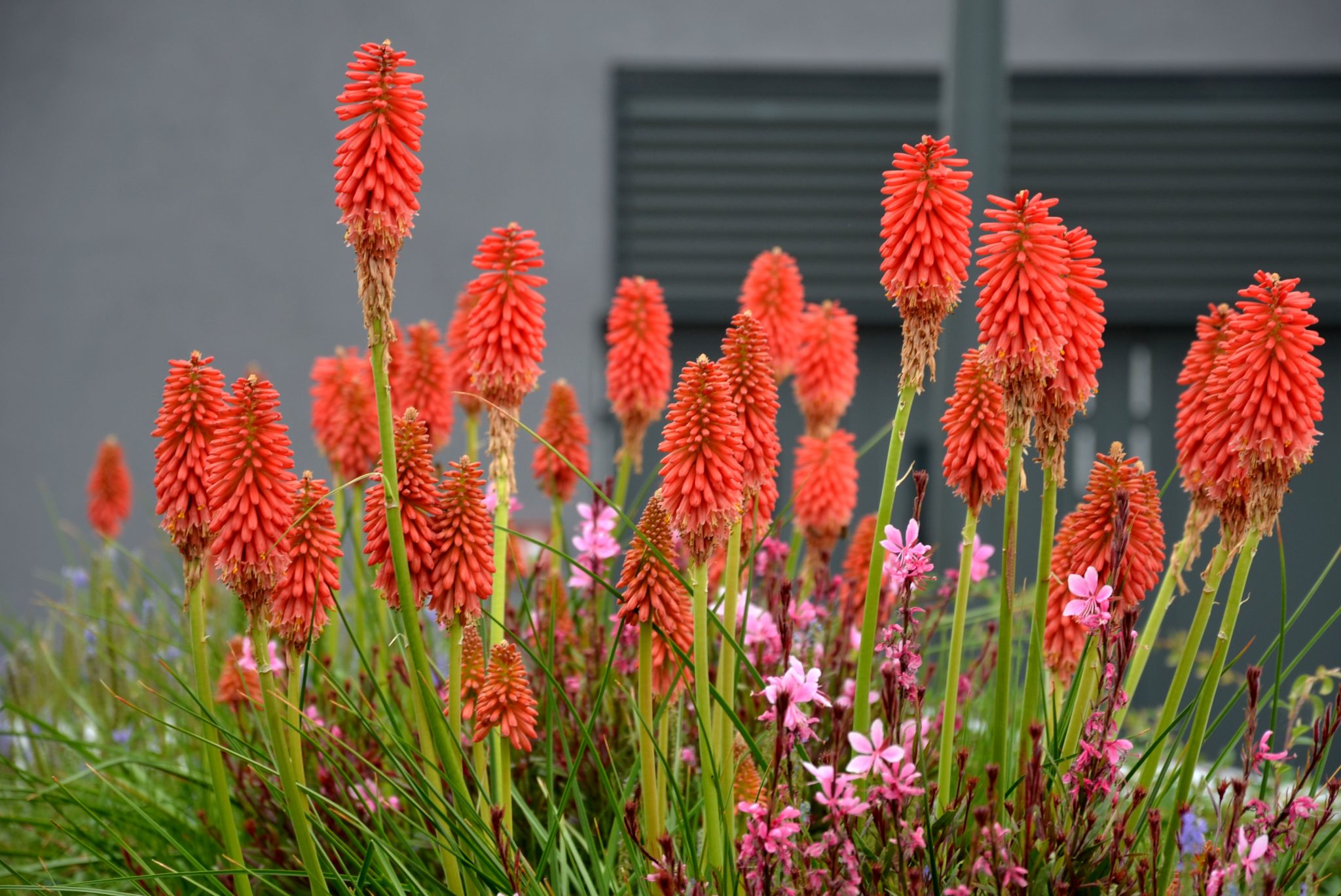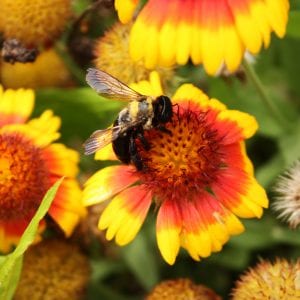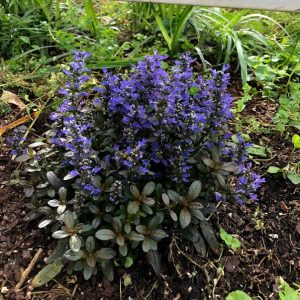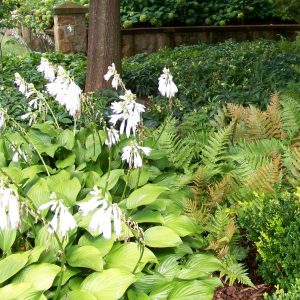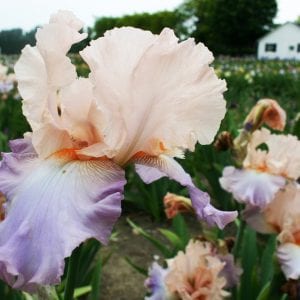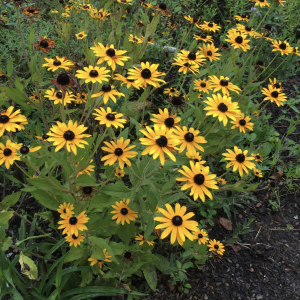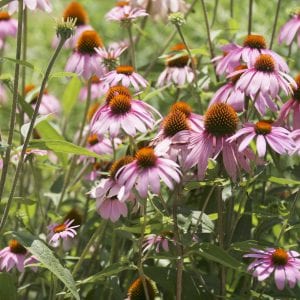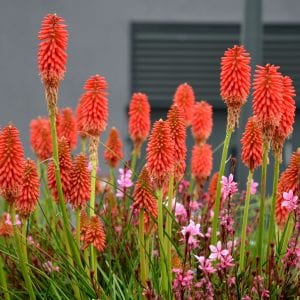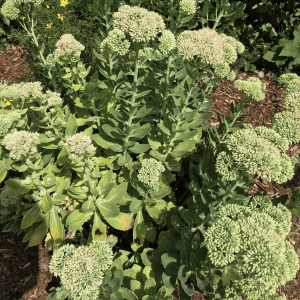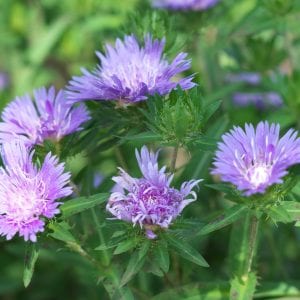Lawn & Garden

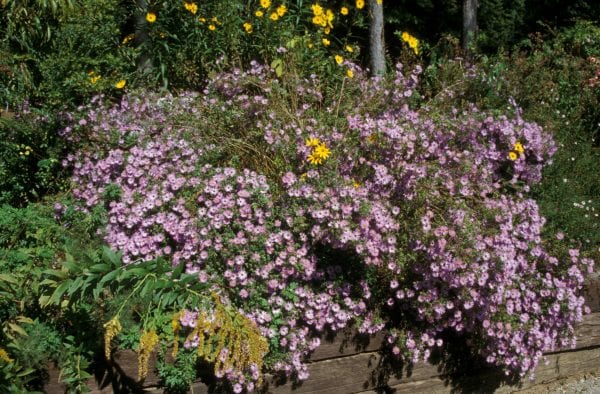
Figure 1. Asters can add color to the perennial border.
There are thousands of perennial species and cultivars to choose from. This guide gives tips on maintaining perennials that thrive in Alabama.
Herbaceous perennials are plants whose tops are killed back by frost but whose roots and crowns survive the winter. The benefit of perennials over annuals is that once planted, they return for many years to come. Perennials are the primary source of spring, summer, and fall flowers for beds, borders, and rock gardens.
Gardeners count on these trusty plants to welcome spring each year with colorful blooms and to provide color and form to the summer and fall landscapes. These flowers have been applied to a wide variety of garden designs, including rock gardens, bog gardens, butterfly and hummingbird gardens, evening gardens, herb gardens, cut flower gardens, and container gardens.
Facts You Should Know
- By definition, perennials grow and flower season after season. Many thrive for a very long time with some care, while others return for only a few years. Some perennials re-seed readily and may move around the garden, others may stay in place for a lifetime. Experience is the best teacher as to the growth habits of individual perennials.
- Unlike annuals, perennials have a definite much shorter period of bloom. Plants bloom in either spring, summer, or fall, with bloom time generally lasting from 2 to 8 weeks. The challenge is to use a selection of perennials to provide color throughout the season.
- The entire shoot portion of most perennials is killed to the ground with frost, with the exception of a few evergreen perennials. This can leave a stark, empty appearance to the garden in winter. Use evergreen shrubs and small trees as a backdrop to the garden to provide winter interest.
- While perennials do not need replanting every year, they are not maintenance free. They do require watering, fertilizing, mulching, cutting back, weeding, dividing, and transplanting to continue in good health.
- Like trees and shrubs, perennial gardens are a permanent installation, so it is advisable to do a good job of soil preparation and planting at the start. Good soil is the foundation of any successful garden, including a perennial garden.
Site Requirements for Perennials
There are thousands of perennial species and cultivars to choose from. A good selection of plants can be found for almost any site, from deep, dry shade to sunny, moist sites. Perennials labeled as full sun will need at least 6 hours of sun, or a considerable amount of late afternoon sun to grow well. Perennials labeled for partial shade will grow best in early morning sun only, or less than 6 hours of direct sunlight.
Generally, perennials prefer well-drained, fertile soil. When drainage is poor, many perennials suffer from root and crown rots, and many perennials will not tolerate constantly saturated soil during winter dormancy. However, some perennials can be found for extreme conditions, such as very dry soils or heavy clay soils.
Maintaining Perennials
Keeping a good-looking perennial bed is not a difficult task as long as the plants are carefully chosen and correctly placed. The following are routine tasks that will need to occur to keep perennials healthy and happy.
Watering
Perennials need up to 1” of water per week. If possible, use drip irrigation or soaker hoses. A rain gauge will help measure the water received when irrigating with a sprinkler.
Weeding
Weeds harbor insects, increase disease problems, and compete for nutrients and water. So, keeping the bed free of weeds is important to healthy plants. Pull weeds before they begin making seeds, otherwise, the weed pressure will be worse next year.
Mulching
A good coat of mulch will help hold water in the soil and decrease weeds. Try to keep a layer of two inches of fine pine bark or pine straw on the bed at all times. Make sure not to mulch plant crowns and stems heavily. Mulching can be done at any time, but adding it over the winter will make beds look neat and tidy over the winter.
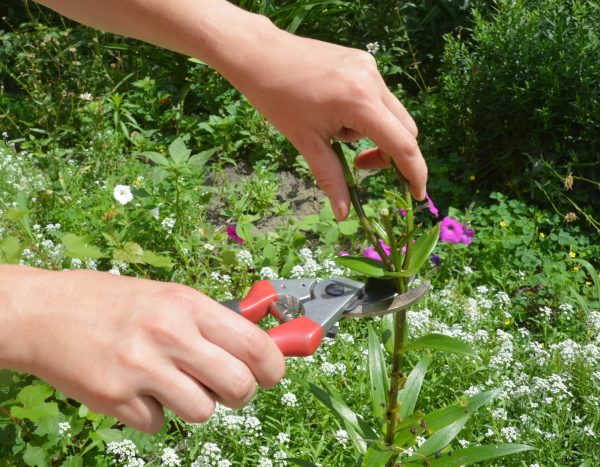
Figure 2. Deadheading. Gardener deadhead lilies. iStock photo by Lex20
Deadheading
By removing spent flower heads after they have faded, many plants will put more energy into producing more flowers. Deadheading many perennials will increase flowering periods from the standard 2-8 weeks to almost the entire summer.
Dividing
Most perennials require dividing every 3-5 years to maintain healthy growth and flowering.
Staking or Pinching
Many fall blooming perennials grow so tall they become floppy if not staked up. Some fall blooming perennials will become bushier if they are cut in half each year in early summer. This will increase branching and make plants able to stand up on their own.
Cutting Down
Perennials should be cut to the ground in late winter before new spring growth occurs. Remove dead growth from the area, sometimes the previous year’s foliage will harbor insects and diseases that can be carried over to the next year.
Fertilizing
Perennial plantings need regular annual applications of fertilizer for healthy growth. Ideally, fertilizers should be added according to soil test recommendations. If no soil test has been done, use a complete fertilizer (such as 8-8-8) at the rate of 1-2 pounds per 100 square feet.
Dividing Perennials
Most perennials will become overcrowded and require division every 3-5 years. Signs that a clump of perennials is in need of division include:
- Poor flowering, or less flowers than previous years
- Dead plant crown, with all the new growth occurring around the dead center
- Overall reduced plant vigor
Dig out the entire clump with a shovel and cut or break off viable portions for replanting. Discard all weak or diseased portions. For best results, divisions should have 3-5 shoots or growth points. Divisions should be made in the early spring (after the last killing frost) for summer and fall blooming perennials. For spring blooming perennials, divisions should be made directly after they bloom or in the fall.
Perennial Care Calendar
Spring
March: Early spring flowering occurs. Cut back leggy or woody perennial, i.e., wormwood, Russian sage, rosemary, or lavender cotton every 2-3 years in early March. Add fertilizer and limestone based on a soil test. Renew mulch beds with a 2-inch layer of pine bark or pine straw. Divide summer and fall blooming perennials as soon as they have new shoot growth. Plant new beds prepared in October.
April: Continue to plant new additions. Divide summer and fall blooming perennials. Plant summer blooming bulbs.
May: Spring flowers are ending and summer flowers are starting. Stake tall-growing perennials. This is a good time to take terminal cuttings to propagate new plants. Check for pests. Divide spring blooming perennials, i.e., columbine, coral bells, irises, after bloom if needed. Start perennial seeds for fall planting.
Summer
June: Summer perennials are in peak flower. Cut back perennials that have completed bloom for fall re-bloom. Deadhead spent flowers to encourage continued bloom, such as tickseed, balloon flower, verbena and sage. Pinch fall bloomers for bushier plants with more flowers. Order spring bulbs now for fall planting. Fertilize perennials lightly.
July: Deadhead perennials as needed.
August: Prepare new beds for fall planting.
Fall
September: Plant fall-flowering bulbs. Order spring-flowering bulbs for fall planting.
October: Plant new perennials in beds prepared in August. Cut back plants after heavy frost. Divide existing clumps of hardy perennials. Prepare beds for spring planting.
November: Plant spring bulbs and irises. Mulch new plantings and marginally hardy perennials for winter protection.
Winter
December: Plant summer bulbs.
January: Early spring bulbs start to emerge and bloom.
February: Cut back ornamental grasses before new growth starts. Many more spring bulbs bloom. Cut back dead and winter damaged perennial foliage, i.e., Lenten roses, and irises. Check for pests and weed while plants are small.
Perennials Recommended for Alabama
The following are a few of the best perennials for Alabama gardens.
Balloon Flower (Platycodon grandiflorus): Bloom time: summer. The balloon flower derives its common name from the puffy, balloon-shaped flower buds. When the “balloons finally pop,” the flowers are light blue, pale pink, or white. The balloon flower is a long-lived, durable perennial that appreciates light shade in the hottest part of the day and grows to 2 to 3 feet. It is also slow to establish, so it will fill out better after a season in the ground. Balloon flower plants seldom need dividing, but they grow tall and can flop over if support is not provided. Pinching spent blooms will encourage blooming all summer long.
Blanket Flower (Gaillardia x Grandiflora). Bloom time: summer. Blanket flower is an excellent perennial for sandy soils with limited moisture and full sun exposure. It is a short-lived perennial that blooms throughout the summer. Petals may be wine red or red with yellow borders. Cultivars grow as short as 12 inches or as tall as 30 inches. The cultivar ‘Goblin’ is widely available.
Bugleweed (Ajuga reptans). Bloom time: late spring. The bugleweed is a low-growing, evergreen ground cover with attractive blue flower spikes. It performs best in moist, shady areas, but it will tolerate sun with adequate moisture. Many cultivars are available with blue, pink, or white flowers. Some are available with pink or white variegated or bronze foliage.
- Figure 3. Carpenter bee on blanket flower (Gaillardia).
- Figure 4. Bugleweed.
Butterfly Weed (Asclepias tuberosa). Bloom time: late spring. Butterfly weeds grow wild in most parts of Alabama. Generally associated with dry sites, these plantings are best established from containerized plants in fall or spring in a full sun location. The brilliant orange clusters of flowers attract butterflies and hummingbirds. While deep orange is the predominant flower color, some cultivars are yellow in color.
Candytuft (Iberis sempervirens). Bloom time: spring. Candytuft is often used as a low-growing, evergreen shrub substitute to edge foundation plantings or perennial borders. It is a welcome perennial for the rock garden too. The plants add even greater appeal when covered with a dense cluster of white flowers in spring. To keep plants compact and neat, shear them lightly after they bloom to remove seed heads and to encourage compact branching. Candytuft prefers full sun and well-drained soil but will tolerate light shade in Alabama.
Canna Lily (Canna x generalis). Bloom time: midsummer. Canna lilies are bold, colorful plants with large tropical leaves and iris-like flowers in yellow, orange, red, and rose. Many cultivars have bronze, maroon, or yellow variegation in the foliage. They grow well in rich, well-drained, moist soil in full sun or part shade. Once established, the canna lily will tolerate drought. Canna lilies are cut to the ground after the first hard frost.
Columbine (Aquilegia x hybrida). Bloom time: spring. Columbine produces lacy foliage and showy flowers on wiry stems. As a result of hybridization, the flowers come in a wide range of colors. Foliage may fade after flowering and can be cut to the ground. Columbine prefers moist, rich soil that has good drainage. If planted in the hotter areas of the state, locate it in medium shade. Leaf miner is a common pest to this plant.
Common Sundrop (Oenothera fruiticosa). Bloom time: summer. Common sundrops grow 18 to 24 inches tall and have delicate, bright yellow flowers in the summer. Native to Eastern North America, it tolerates dry soil but performs at its best if given even soil moisture and full sun. Showy evening primrose (Oenothera speciosa) is native to the Southeastern region of the United States and has pink flowers. It can be invasive in moist, rich soils.
Daylily (Hemerocallis x hybrida). Bloom time: summer. Daylily is the most popular perennial in Alabama. Individual flowers only last one day. However, it is possible for a sizable clump to be in bloom for several weeks because of the number of flowering stems and flower buds produced. Many new cultivars will rebloom throughout the summer. While daylilies grow with little care, they respond to irrigation and fertilization. Plant in full sun or light shade and mulch. Hybridization has resulted in more than 20,000 cultivars.
False Blue Indigo (Baptisia australis). Bloom time: Late spring. False blue indigo has beautiful blue to gray green foliage that emerges early in the spring to become a substantial sized bush, often 3 feet tall and 4 feet wide. The indigo blue, pea-like flowers are on 10-inch stalks that give way to 3-inch brown pea pods in summer. Plant false blue indigo in full sun and well-drained soil. It is drought and heat tolerant when established. Recently, many new Baptisia hybrids have become available, including varieties with flowers ranging from marron to yellow.
Hosta or Plantain Lily (Hosta sp.). Bloom time: summer. Many cultivars are available with varying leaf pattern and coloration. Leaf texture may be smooth, ribbed, or seersucker, and may be flat, wavy, or twisted. Leaf coloration includes light green, dark green, gray, yellow, and bluish green. Variegated leaf forms are also available. As an added bonus, white or lilac flowers are born on stalks high above the foliage. Hostas perform best in shaded areas with moist, rich soil; however, some cultivars need some sun if foliage is to color properly.
- Figure 5. Yellow-red daylily.
- Figure 6. The varied textures of hosta, autumn fern and Lenten rose add interest to the perennial garden.
- Figure 7. Bearded iris.
Iris Hybrids. Bloom time: late spring to summer. Bearded Irises (Iris germanica), Siberian Irises (I. siberica), and Japanese Irises (I. kaempferi) bloom in this order ranging in height from 2 to 4 feet with the flowers held high above the foliage. An almost endless array of colors is available in the bearded irises: blue, purples, and whites in the Siberian irises; primarily blues and purples in the Japanese irises. Bearded irises should be grown in full sun and require excellent drainage. Siberian and Japanese irises grow well in light shade and tolerate moist soils. Several bulbous iris species also grow well in Alabama.
Lavender Cotton and Green Lavender Cotton (Santolina chamaecyparissus and S. virens). Bloom time: summer. Both species are grown primarily for their foliage, silver-gray and bright green, respectively. Plants form a broad, spreading mound about 2 feet tall and 3 feet wide. They are frequently used for edging. Both require full sun and well-drained soils.
Lenten Rose (Helleborus orientalis). Bloom time: late winter. Lenten rose is valued because of its unique time of bloom, February to March, and its long bloom season, 8 to 10 weeks. These evergreen plants are slow growing with leathery, dark green leaves that are attractive and evergreen. Growing 12 to 15 inches high, the nodding flowers are white with lavender shading fading to green. They are good cut flowers. Helleborus grows best in Alabama in shade or partial shade and can tolerate dry soils.
Moss Phlox (Phlox subulata). Bloom time: early spring. Moss phlox, or thrift as it is commonly called in the South, is a low-growing, spreading perennial. It is often seen growing on sand or clay banks, where it seems to thrive under dry and infertile conditions. Gardeners often select moss phlox for use in rock gardens because of its ability to thrive under adverse conditions and neglect. It does need well-drained soil and full sun to perform best. The needlelike foliage forms a dense, low mat of growth. Cultivars producing white, blue, or bicolor flowers are available in addition to the common pink. Woodland phlox (P. divaricata) is one of the few phlox species that will grow in shade.
New England Asters (Symphyotrichum novae-angilae). Bloom time: fall. Asters are excellent perennials for borders, naturalized areas or rain gardens. An abundance of purple flowers may cover the 4-foot tall plant in fall that attract butterflies and native pollinators. Asters flower best in full sun, and can grow in heavy clay soils. Pinching back stems two times through the summer will create a sturdier, branched plant.
Orange Coneflower (Rudbeckia fulgida). Bloom time: summer. Orange coneflower is one of the easiest perennials to grow. It grows well in full sun or light shade and withstands dry soil conditions well once it is established. The dark-green, leathery foliage forms a basal clump from which arise 2- to 3-foot flower stalks in the summer with 2- to 3-inch yellow daisy-like flowers with brown to purplish centers. Although not invasive, it will form dense clumps in rich soil.
Pinks: Maiden Pink (Dianthus deltoides), Cheddar Pink (D. gratianopolitanus), and Cottage Pink (D. plumarius). Bloom time: late spring. Pinks have long been a favorite perennial for use in rock gardens and as an edging plant for the bed or border. The low, spreading growth habit, grayish-green foliage, and fragrant carnation like flowers make all species welcome additions to the garden. In South Alabama, plant pinks in full sun to part shade in well-drained soil. Plants may rebloom in the fall if spent flowers are removed. The foliage may be burned slightly by extremely hard freezes, but it recovers quickly.
Purple Coneflower (Echinacea purpurea). Bloom time: summer. Purple coneflower has striking flowers with purplish-pink petals that naturally droop surrounding a central bronzy cone. The tough, deep-green foliage contrasts nicely with the flower color. This native perennial grows to a height of 3 to 5 feet and performs well under hot and somewhat drought like conditions. A good butterfly attractant, this plant may require staking to support the heavy flowers. Mildew can be a problem on this plant. Recent hybridization has introduced many new echinacea cultivars with flower colors including white, red, yellow, and orange.
- Figure 8. Orange coneflower can add color to the perennial border.
- Figure 9. Purple coneflower.
- Figure 10. Torch lily. iStock photo by beekeepx.
Red Hot Poker or Torch Lily (Kniphofia uvaria). Bloom time: late spring. Red hot pokers form heavy clumps of gray-green, sword-shaped leaves. The 3-foot flower spikes bear nodding, tubular, orange flowers. They generally do well in sunny locations, but protection from intense sunlight makes the flowers last longer. Plant red hot pokers in humus-rich, well-drained soil, and do not allow them to become water-stressed while flower buds are forming. Division should be infrequent because they do not respond well to root disturbance. Cultivars are available with green, coral, yellow, red, scarlet, or bicolor flowers.
Rose Campion (Lychnis coronaria). Bloom time: late spring. The densely pubescent, grayish-white leaves and stems of rose campion contrast well with the rose-red, pink, or white flowers. Plants grow 2 to 3 feet tall in full sun and well-drained soil. Like many plants with pubescent foliage, they may rot in wet, humid weather. Rose campion may not be a long-term perennial. Many die after several years but readily reseed in the landscape.
Rose Mallow (Hibiscus moscheutos). Bloom time: summer. Growing 3 to 8 feet tall, rose mallow produces incredible 6- to 12-inch diameter flowers in shades of white, pink, rose, red, or bicolor. Blooming from early summer to fall, rose mallow is somewhat coarse in appearance, but it can be used to advantage in the landscape. Do not confuse it with Rose of Sharon (H. syriacus), a woody deciduous shrub common in the landscape or with the tropical hibiscus (H. rosa-sinensis), which is not hardy in all parts of Alabama. The Confederate rose (H. mutabilis) is a large plant (up to 10 feet) with flowers that change color from white or pink to red as they age.
Russian Sage (Perovskia atriplicifolia). Bloom time: summer. Russian sage has proven itself to be a durable garden performer. Plants grow up to 4 feet tall and about as wide. They are covered with delicate, blue-green, pungent foliage. Tubular, light-blue flowers over the branches in whorls (spirals) in the summer. Plants may bloom for 2 to 3 months. Russian sage grows best in full sun and good soil drainage. Plants can be cut back to 12 inches above the ground in early spring to control plant size.
Sage (Salvia farinacea and S. x superba). Bloom time: early summer. Mealy-cup sage offers blue or white flowers that contrast with grayish stems. These colors provide a relief from the more conventional hot colors such as red and orange. Individual plants send out several branches reaching 15 to 20 inches in height. Each branch produces a terminal flower spike. Both of these perennial salvias tolerate dry conditions fairly well.
Sedum (Sedum ‘Autumn Joy’). Bloom time; late summer. There are dozens of sedum species cultivated that vary tremendously in growth habit. This cultivar is among the showiest. Flower colors range from white to pink. Blooming in late summer until frost, plants are effective as single specimens or in small groups. Heights range from 1½ to 2 feet tall. Full sun or light shade is best, but sell drained soil is essential.
Shasta Daisy (Leucanthemum x superbum). Bloom time: late spring to summer. Shasta daisies have large (2 to 6 inches), white, daisy-like flowers in late spring. The leaves are dark green and strap like and, in many cultivars, have coarsely toothed margins. More than two dozen cultivars are available, ranging from 8 to 12 inches to 3 to 4 feet. Plant Shasta daisies in full sun and well-drained soil with consistent moisture and fertility. Part shade is best if plants will be exposed to heat and drought. Plants gradually die out in the center over 2 to 3 years and benefit from dividing and replanting.
- Figure 11. Blooming sage. iStock photo by Anna Oleinik.
- Figure 12. Sedum ‘Autumn Joy’ is a good fall blooming perennial for dry garden sites.
- Figure 13. Stoke’s aster. iStock photo by TokioMarineLife.
Spike Gayfeather (Liatris spicata). Bloom time: summer. Spike gayfeathers produce tall flower spikes 3 to 4 feet high. Flower colors range from rose-lavender to pink and white. They respond to moist, well-drained soils in full sun or light shade, and they are very heat tolerant. They do, however, survive in drier sites but need moisture during the flowering period. Remove spent flower spikes to encourage secondary flowering. The flowers are excellent as fresh or dried flowers.
Spike Speedwell (Veronica spicata). Bloom time: summer. Colorful flower spikes are the trademark of speedwell. You will find various cultivars available that produce blue or white flower spikes at the ends of branches, from June to August. The spiky blue flowers can be used effectively in perennial borders. V. repens is a very low-growing, mat-forming type with evergreen foliage.
Stoke’s Aster (Stokesia laevis). Bloom time: late spring. Stoke’s aster, one of the hardiest perennials grown in Alabama, withstands dry conditions well. Plants are low growing initially, stretching from 15 to 18 inches at bloom time. The most common variety produces light blue flowers. Plants may begin blooming in May and continue blooming sporadically into October. Plant in well-drained locations. The plants like full sun but will grow in partial shade. Removing spent flower spikes prolongs the bloom season.
Tickseed Coreopsis (Coreopsis grandiflora). Bloom time: summer. Tickseed coreopsis is a highly praised garden perennial that produces yellow, daisy like flowers from summer into fall if the old flowers are removed. They grow best in full sun and are fairly drought tolerant, but they may require irrigation during prolonged dry weather. Coreopsis is among the easiest perennials to grow but is often short lived. Threadleaf coreopsis (Coreopsis verticillata) is a longer lasting perennial with very fine-textured foliage and yellow flowers throughout the summer. The cultivar ‘Zagreb’ (golden yellow flowers) may be a more reliable perennial than the cultivar Moonbeam (lemon yellow flowers), especially in South Alabama.
Verbena: Clump verbena (Verbena canadensis) and moss verbena (V. tenuisecta). Bloom time: summer. Clump and moss verbenas are many branched, low-growing plants that bloom from late spring into late summer. They are both Southeastern native plants. Clump verbena has larger leaves with toothed margins and comes in lavender, red, pinks, white, or bicolor flowers. Moss verbena has fine, dissected foliage with flowers in purple, pink, or white. Both plants grow well in full sun and well-drained soil.
Wormwood (Artemisia x ‘Powis Castle’). Bloom time: late summer, but insignificant. Wormwoods are a large group of plants grown in perennial gardens for their beautiful silver-gray, fine-textured foliage. The cultivar ‘Powis Castle’ has a spreading mound growth habit that blends well in almost any setting. Another wormwood commonly available is A.ludoviciana ‘Silver King.’ Though a beautiful foliage plant and a dependable perennial, it can spread with reckless abandon. Wormwoods generally tolerate dry, poor soil in full sun or part shade. These plants may develop rot problems in shade and high humidity.
Yarrow: (Achillea x ‘Coronation Gold’), Fern-leaf Yarrow (A. filipendulina), and Common Yarrow (A. millefolium). Bloom Time: late spring. Coronation Gold yarrow has gray-green, fernlike foliage at the base and clusters of yellow flowers in a flattop head on 2- to 4-foot stalk. Fern-like yarrow is similar to Coronation Gold yarrow but grows taller and has greener foliage. Common yarrow grows like a prostrate ground cover and has red, pink, or white flowers. Yarrows tolerate drought and infertile soils in full sun and make excellent cut or dried flowers.
- Figure 14. Moss verbena (Verbena tenusiecta).
- Figure 15. Yarrow (Achillea).
Herbaceous perennials make attractive plants for any garden. Visit Alabama Extension at www.aces.edu to learn more about these garden favorites.

